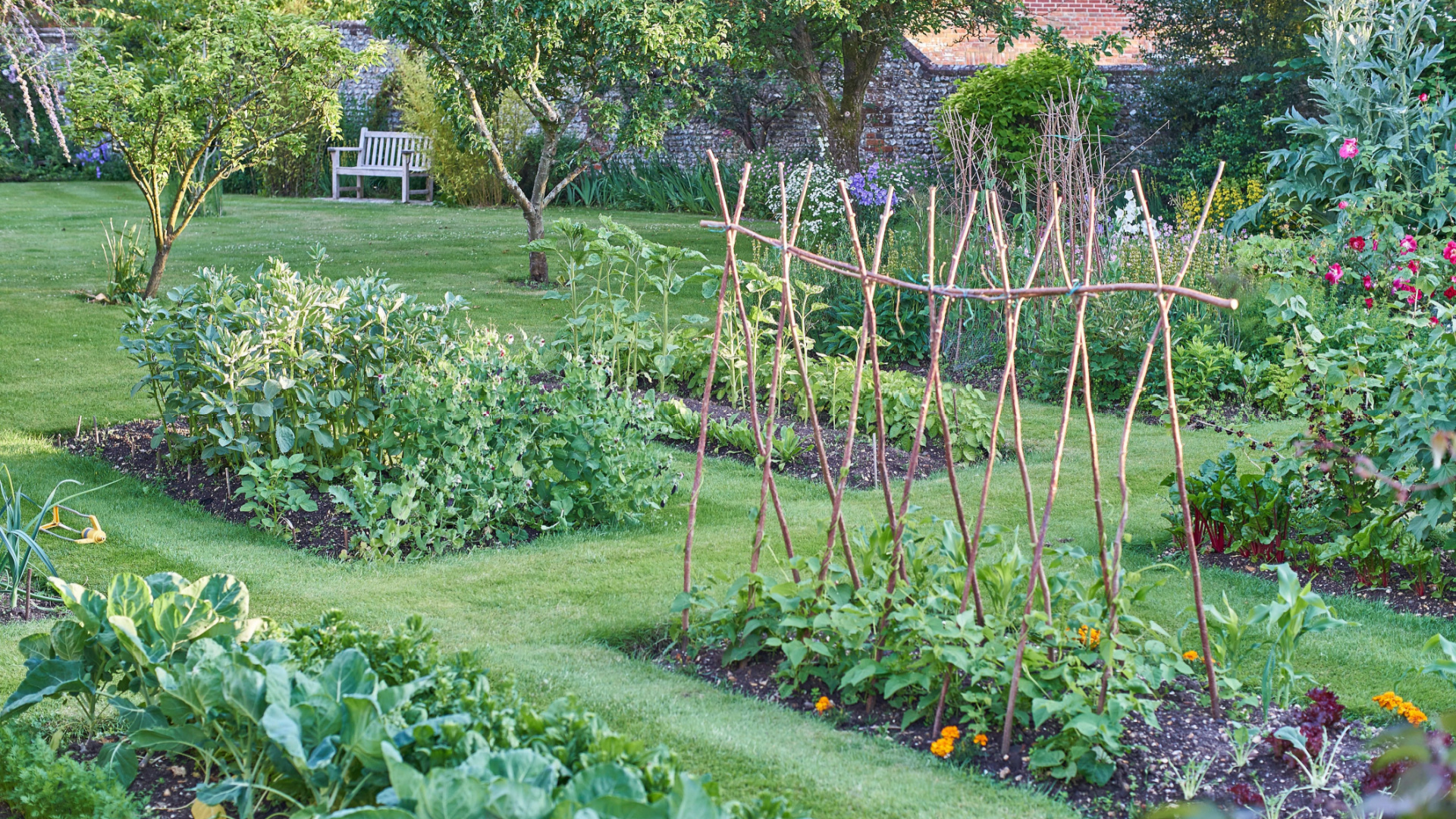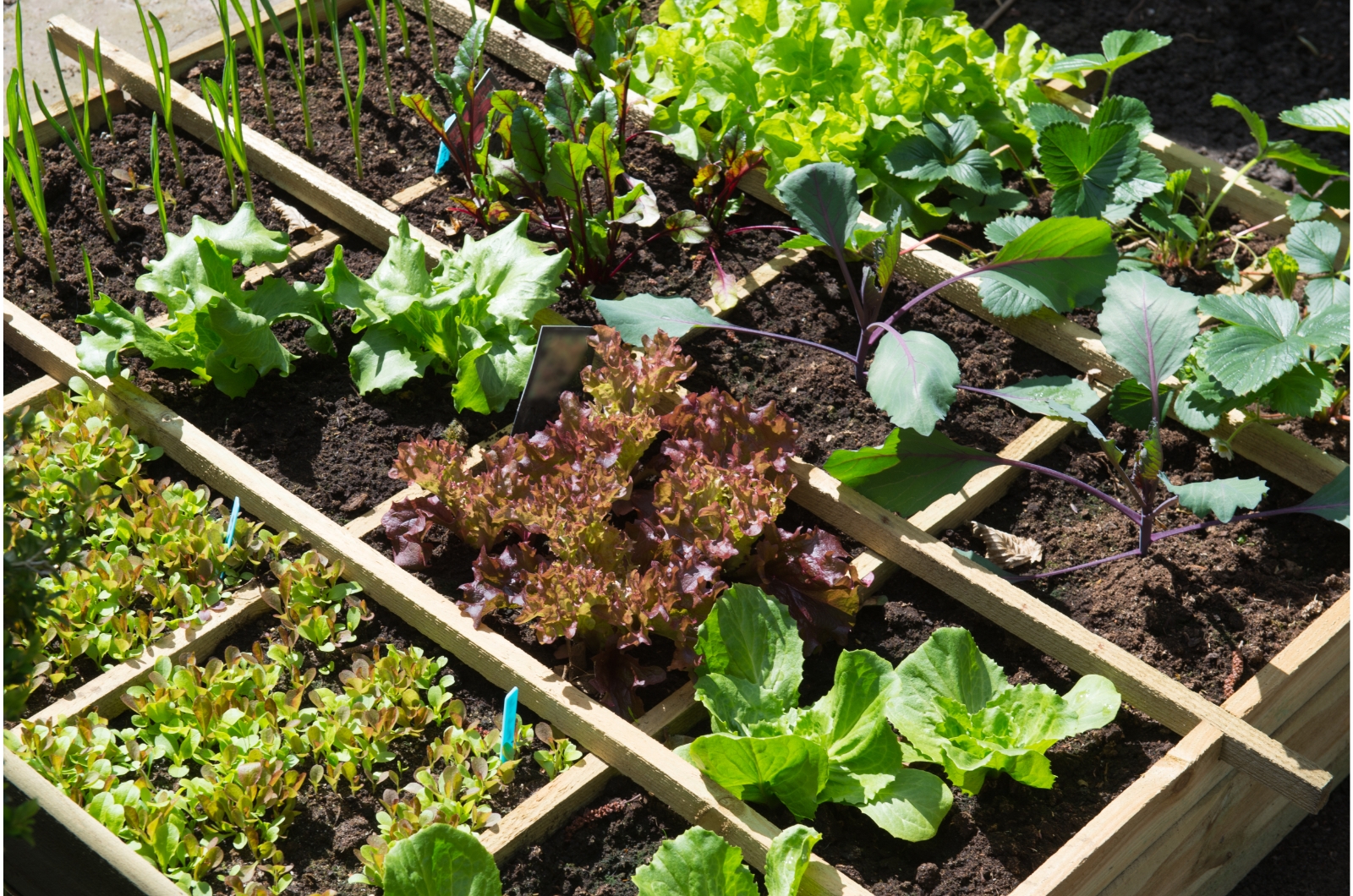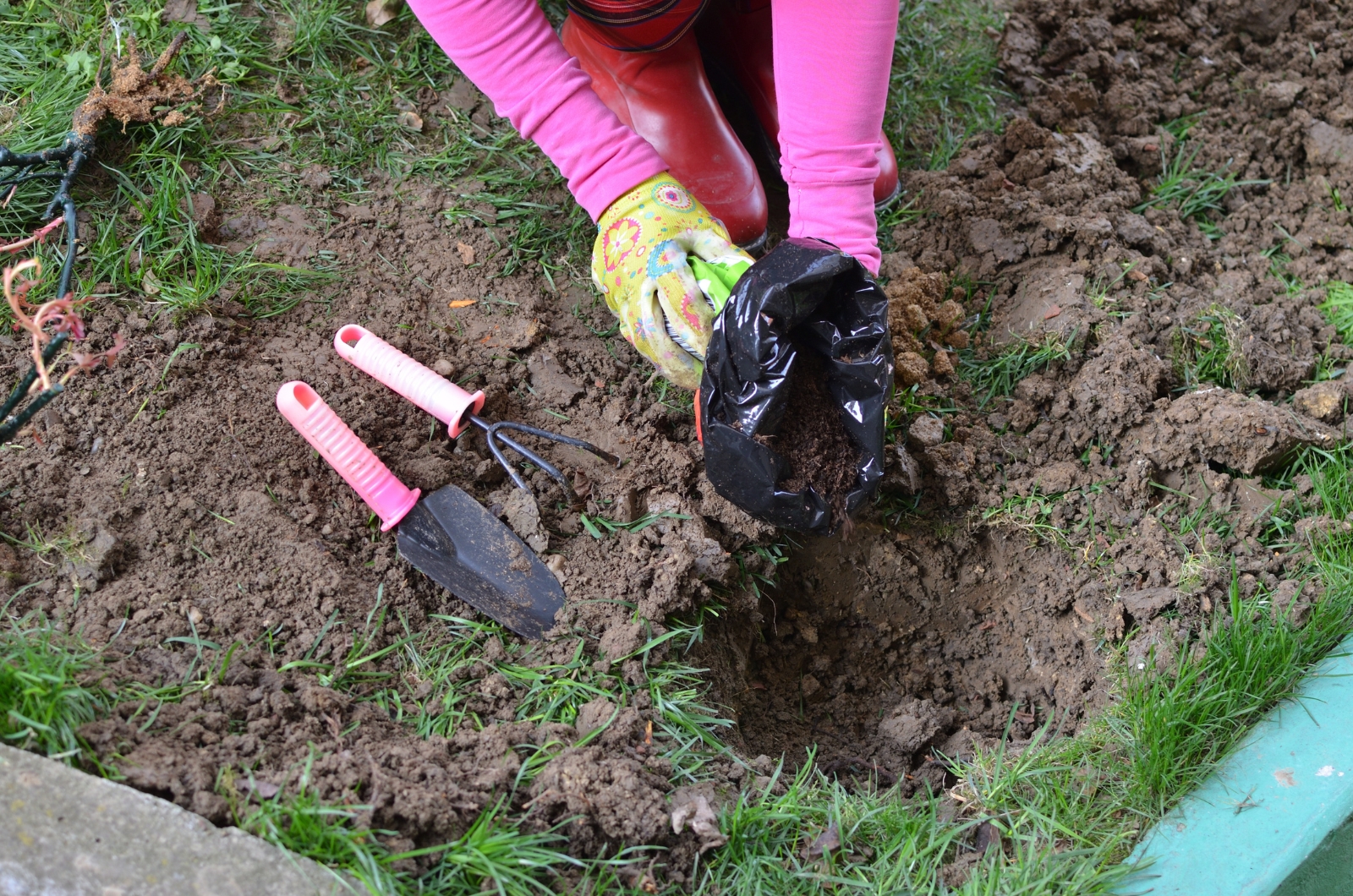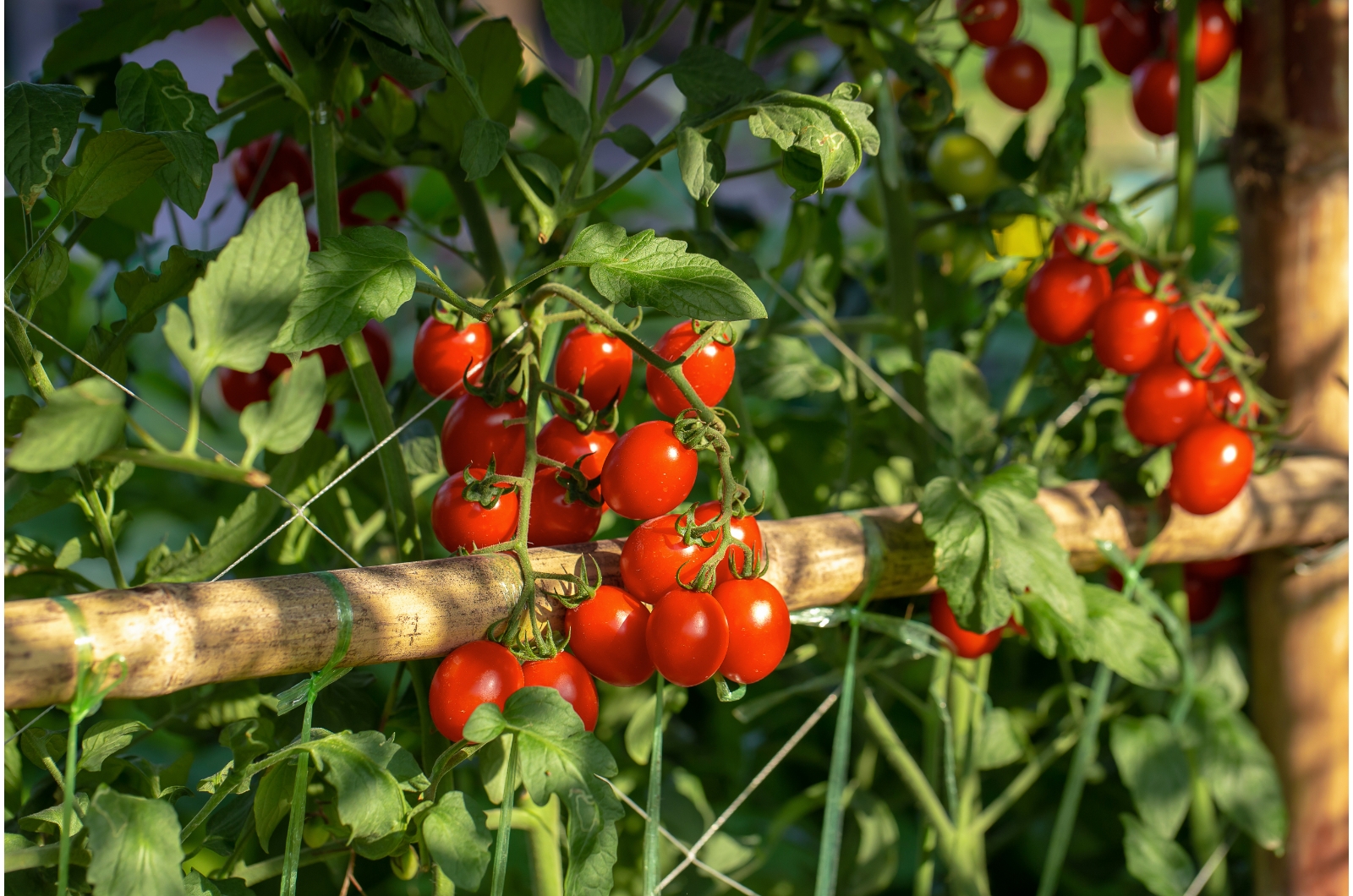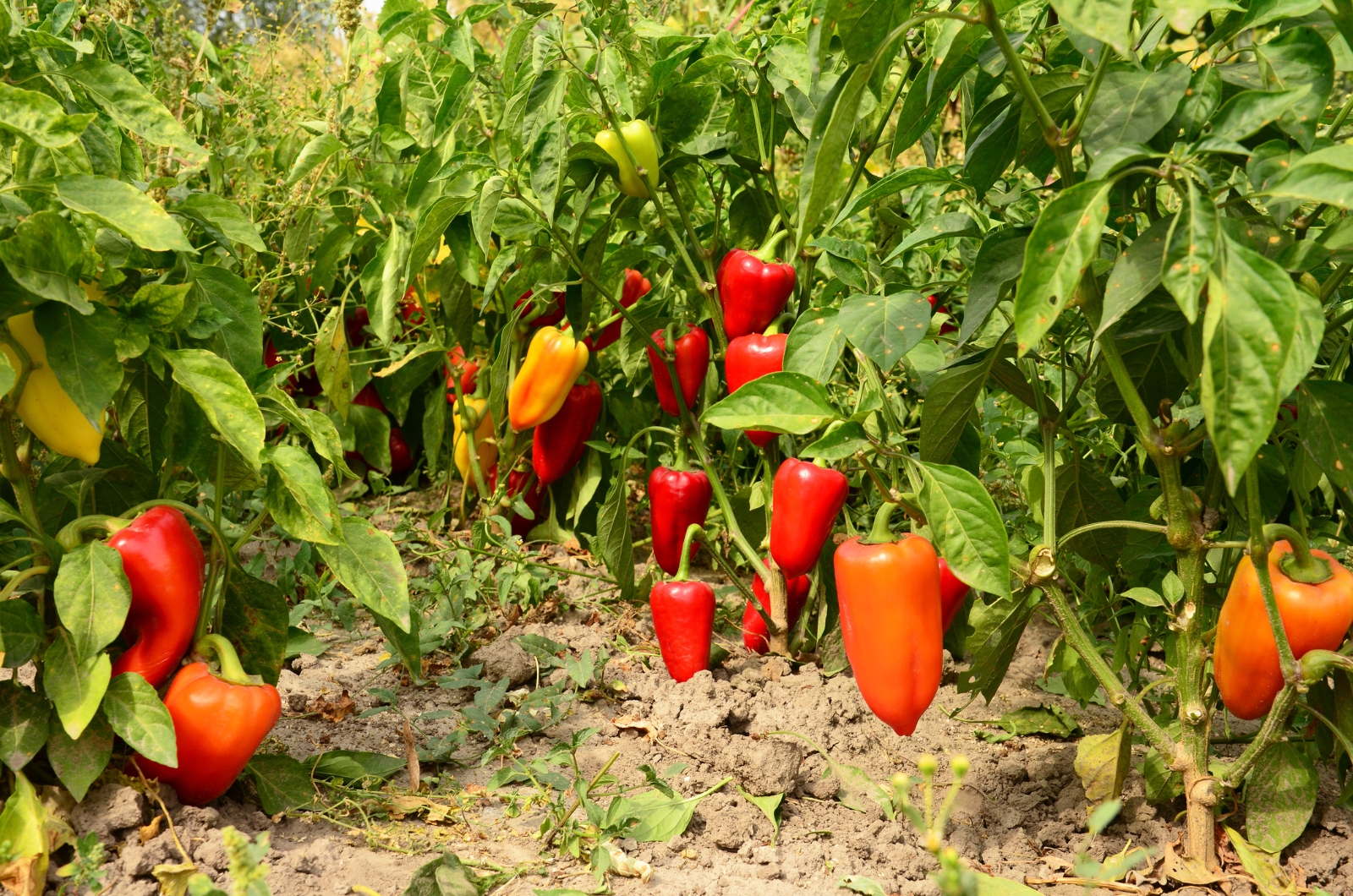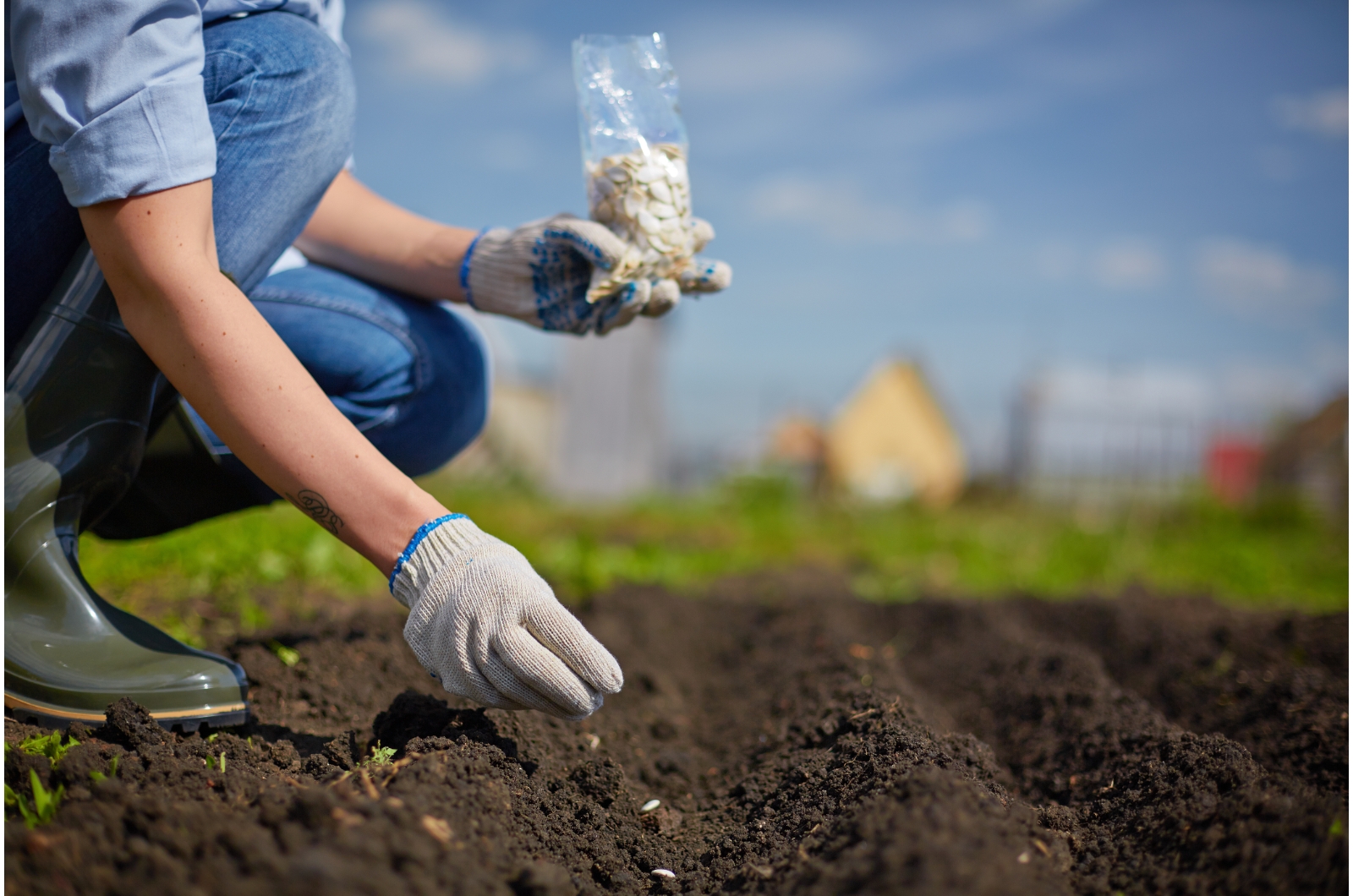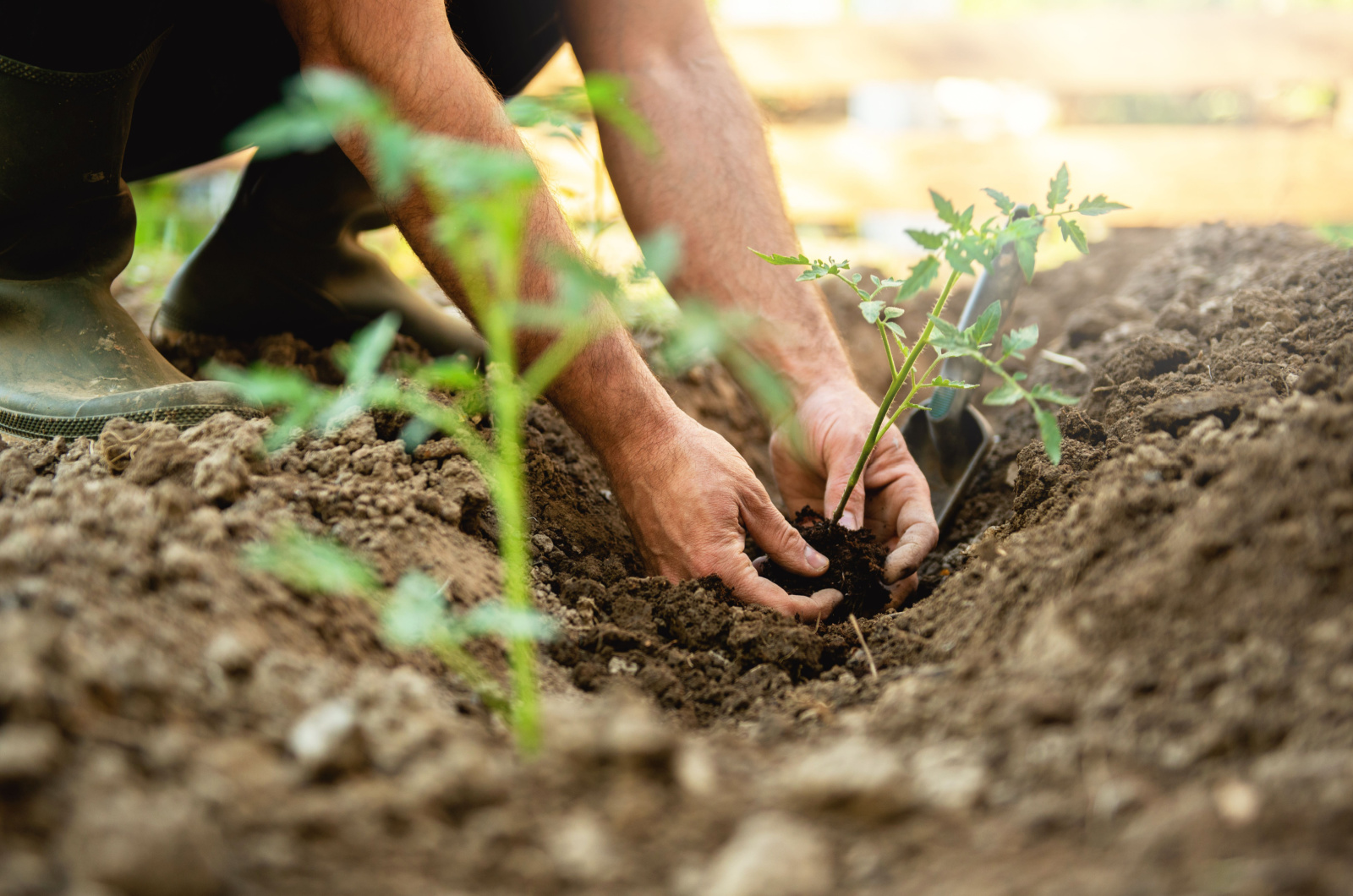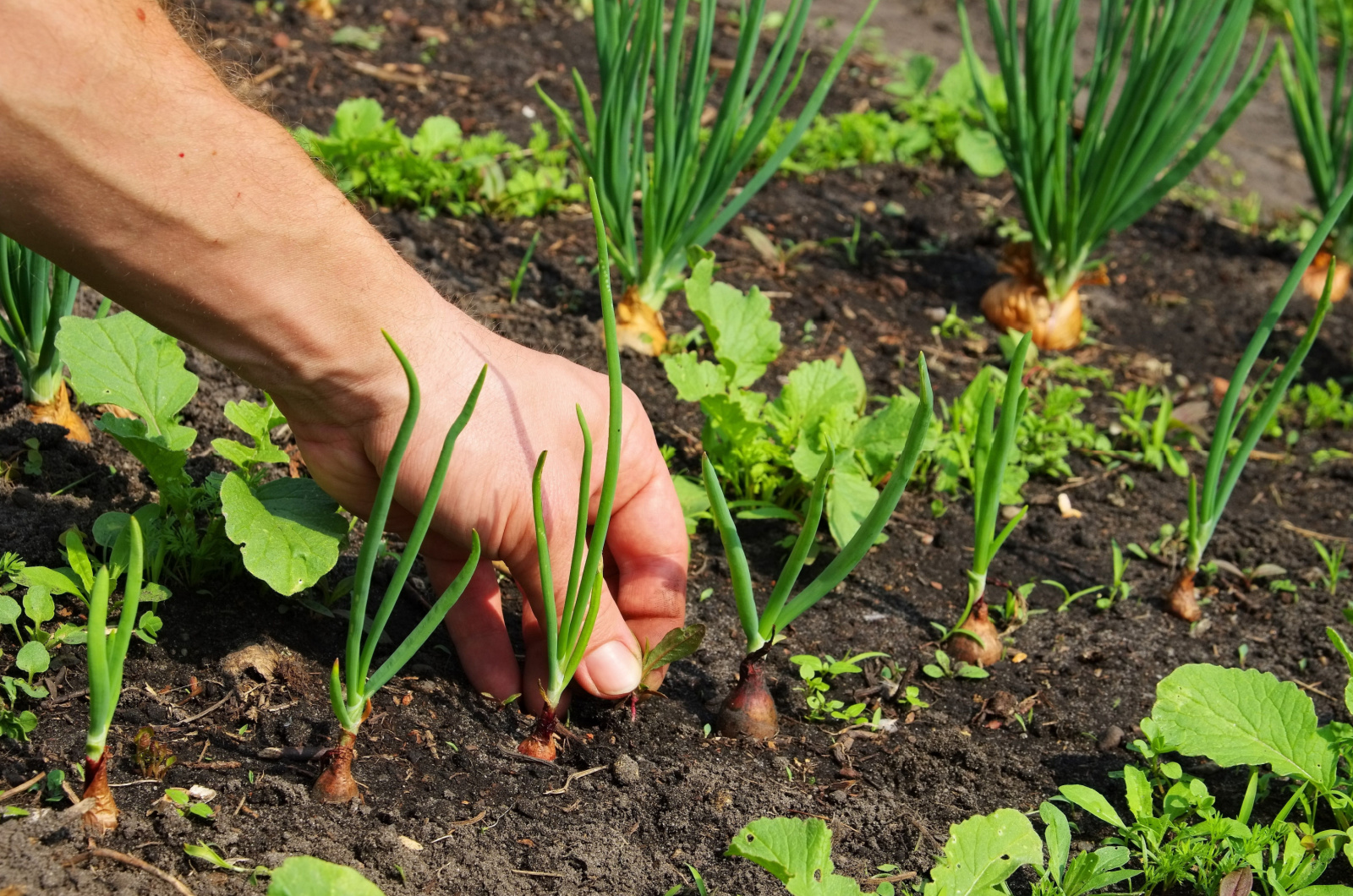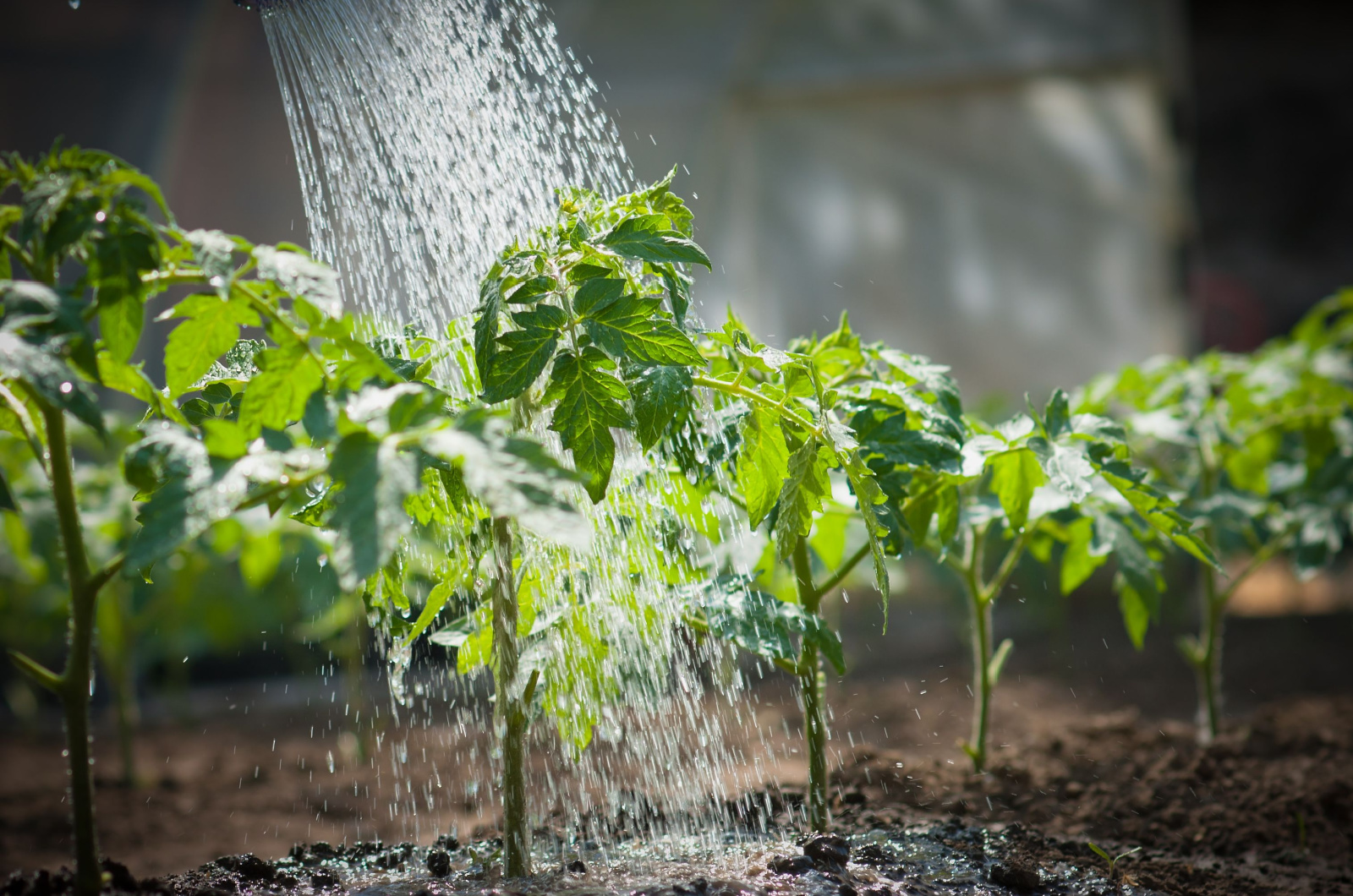In the first article of my new series, Ground-Up Garden, I’ll talk about the basics of building a strong foundation for your vegetable garden.
I know what it takes to start your own plot from nothing, so here are the tips that I would have loved to hear back then.
The thing is, you don’t have to do it all at once! Start small with only one gardening type (containers, for instance) and then build your experience from there.
Let’s get started!
#1 Choose The Gardening Type
There are quite a few different garden types you can choose from. The most common ones include in-ground, container, and raised bed gardening.
All these kinds are suitable for beginners, but I’d suggest going with what you have. If you have a few planters lying around, try sowing some basil, sage, rosemary, or other herb you like.
If you have a nice little plot, turn it into a garden. Don’t go and spend an awful lot of money on containers and raised beds if there’s no need!
Remember, the key is to start simple. Don’t overwhelm yourself at the beginning. Work with what you already have, and slowly add more when you get ready.
Once you master your first gardening choice, you can take your chances with another one!
#2 Find The Best Location
The key to building strong garden foundations that will last you for years to come is understanding the guide to sun exposure. This will allow you to choose the best location for the plants you wish to grow.
Many vegetables adore full sunlight, but there are also those that need some shade in the afternoon, especially in hotter climates.
So, your best bet would be to set up your garden where there isn’t that much shade throughout the day. If your vegetables start to show signs of burning (curly and brown leaves), you can always cover them with a shade cloth.
It’s easier to shade your plants than introduce them to more sunlight. But if you live in the South like I do, I’d find a spot that gets some shade in the afternoon and plenty of sunlight in the morning.
For northern climates, choose a spot that gets as much light as possible. This is crucial if you want to grow warm-season plants such as eggplants, tomatoes, and peppers.
#3 Prepare The Soil
One of the key things you need to think about is preparing the growing medium the right way. Regular garden soil is usually too heavy and compacted or sandy. Neither case makes it a good substrate for vegetables to grow.
Luckily, there is one ingredient that can fix all your problems – compost. You can make a large-quantity purchase or produce your own. You can also use aged manure if that is more accessible to you.
One thing I found that works wonders is green manure. All you have to do is plant some cover crops, let them grow, and cut them down before they set fruit. Field beans and similar legumes are perfect for this.
They will fixate nitrogen and enrich your substrate in this nutrient. And once you terminate them, they will decompose and introduce other minerals to your soil.
Finally, add some fertilizer before planting or transplanting your vegetables. This will give them a little boost and increase your harvest.
#4 Have Your USDA Zone In Mind
The newest USDA hardiness map changes the way we grow everything in our gardens. The temperature increased in many parts of the US, which means we need to either find new vegetables to grow or plant them earlier.
Of course, it’s not like you’ll need to plant your summer veggies in the midst of winter. But, sowing them half a month or a month earlier can yield you with a larger harvest.
The USDA plant hardiness map can help a lot when it comes to planting. It will help you discover all the plants you can easily grow in your area.
Growing plants within their hardiness zones makes caring for them a lot easier. They won’t need as much water, can adapt to the amount of sunlight you get, soil, etc.
#5 Start With Beginner Friendly Vegetables
I always recommend starting simple, and that means growing beginner-friendly plants. Sure, you’ll want to grow what you love to eat. Once you decide on your favorite vegetables, see whether they’re easy to grow in your region and in general.
Some amazing beginner-friendly fruits and vegetables include strawberries, raspberries, cucumbers, bell peppers, cabbage, and tomatoes.
All you have to do for these plants is water them, ensure they get plenty of sunlight, and plant them in a nutrient-rich environment.
#6 Check Their Planting Dates
One of the most common planting mistakes beginners make is starting their seeds or transplants at the wrong time.
If you sow or transplant your vegetables too early, you risk frost and cold hindering their germination and growth. Do it too late, and hot temperatures may scorch them, leaving you with a mediocre harvest at best.
The best thing you can do is discover your last spring frost date. Around that time, start monitoring the weather forecast. Once the nighttime temperatures are consistently at least above 45°F, you can sow your seeds or transplant seedlings.
Also, before moving your young plants outside, make sure to harden them off the right way. This will reduce the transplant shock and prevent them from dying.
#7 Give Your Plants Some Room
Spacing is a planting factor that we don’t give much attention to. If you overcrowd your plants, they will compete for nutrients, moisture, and sunlight. This will result in stunted growth and less-than-average yield.
Overcrowding can also increase the risk of fungal diseases. It reduces the airflow in and around your vegetables. This keeps them moist for longer, making it suitable for spores to multiply.
The good news is that there are guides for plant spacing that can help you calculate how much room to leave between each plant.
Not all vegetables need the same spacing. What I like to do is always leave a little bit more room. This won’t hurt them, but overcrowding will.
Pro tip: If you’ve sown plenty of seeds in a small space, you can always thin the seedlings. Compost or replant the remains in another place, depending on how much free space you have left.
#8 Weed Away
There’s always one thing we hate and desperately need at the same time. In the gardening world, that’s weeding.
If you let these unwanted plants grow beside your vegetables, you allow them to take moisture, sunlight, and nutrients your veggies need. Not to mention overcrowding and the issues it brings with it!
Weeds can also spread everywhere, pushing and choking your vegetables out. To prevent this, you should mulch your garden after you get decent-sized seedlings. That means that they’re tall enough so that the mulch doesn’t bury them.
If you’re not sure about which mulching material to use or you’re not ready for that step yet, you can always remove the weeds yourself.
I prefer removing them by hand since that is the safest method that won’t hurt your plants or contaminate the soil around them.
But if you’ve let your garden go, you may need some help from herbicides. Just make sure they’re organic so that you don’t introduce toxic chemicals to your vegetables.
#9 Don’t Forget About Individual Plant Needs
Every vegetable has its own needs for moisture, sunlight, and nutrients. That means you should find the right location for them and fertilize and water them the right way.
Not all plants need full sunlight or a huge amount of moisture or nutrients to thrive. That’s why it’s always best to consult the care guide for every single plant you grow just to be certain.
Additionally, you should irrigate them properly. Some of the most common garden watering mistakes are watering your plants at midday and night.
This will cause the water to evaporate too quickly and leave your plants dehydrated, or the moisture will pool around your plants, waterlogging it. That’s why you should always water your vegetables in the morning or late afternoon.
Also, you should irrigate your plants at their base and avoid wetting their leaves as much as you can. Constantly damp foliage can increase the risk of powdery mildew and other fungal infections.
Finally, most vegetables will need at least one additional fertilizer application to produce bumper crops. Choose a well-balanced fertilizer or do what I do and feed them with compost.

